Lower Limb Pain
Inc Hip, Pelvic, Knee, Foot and Ankle Pain
Hip/Pelvic pain:
Being a major load bearing structure of the human body , the hip joint is also subject to very high compression forces. Often hip pain is one sided and in the majority of cases related to habits that people have adopted long term. Pain can be bone (joint) in origin and therefore termed arthritic or osteo-arthritis. This can be established by the pattern and area of pain and simple manual testing but only conclusively by way of x-ray. In more serious cases, surgical intervention is necessary to replace the joint (total hip replacement). Physiotherapy rehabilitation to address the whole lower limb is an absolute must following any surgical procedure.
Post trauma ie fractured (break) hip/thigh: physiotherapy is vital in the rehabilitation of any joint where a fracture is involved. Manual therapy together with exercise therapy for strength and mobility will aid recovery.
Muscles can also be a very common source of pain in the hip/pelvic region. This may be with sports people and even those that don’t participate. Most cases are still habit driven and not as a consequence of sports participation itself. Treatment comprises of establishing the habit and the muscle weakness or flexibility issues caused by the habit. Rehabilitation by way of manual and exercise therapy is then commenced to re-establish normal function.
The lower spine can also be a source of hip/pelvic pain. Often there is not one without the other. Establishing the source of pain in the lower spine ie neural (nerve) that can radiate to the pelvis/hip is vital in the planning of rehabilitation. Treatment is then directed at the lower spine.
Knee pain:
Being another major load bearing structure of the human body, the knee is subject to very high compression forces. The key issue with knee pain is establishing the source of pain and whether intervention by way of physiotherapy will assist. In most cases it will. Where it will not, then onward referral for surgical review via your GP or insurance company may be necessary.
Anterior (front) knee pain is one of the most common issues with the knee. Generally, it will come on without prior injury or can be started by direct trauma to the front of the knee ie a
fall onto the knee(s).
It involves the joint formed by the knee cap and the thigh bone and it’s surrounding soft tissue structures. It generally responds very well to strengthening of the whole kinetic (movement) chain ie the hip, the knee and the ankle. The daily habit driving this weakness in the chain must also be established and adjusted for long term resolution.
Tendinitis can occur at the front and the back of the knee. It is the overloading of connective muscle tissue by inappropriate forces caused by a weakness somewhere else in the kinetic (movement) chain ie weakness in hip muscles can lead to overload of muscle structures of the knee, weak buttocks can lead to hamstring overload. Appropriate local treatment is required for the source of pain and this is complemented by strengthening of all muscle groups involved.
Osteo-arthritis or wear and tear is common place in the knee because of the load bearing nature of the joint. This affects primarily the joint between the thigh bone and the main shin bone but can also affect the knee cap joint as mentioned above. Not all osteo-arthritis leads to joint replacement however and it does respond very well to local treatments such as manipulation, acupuncture, taping and injections as well as strengthening of the whole kinetic (movement) chain ie the hip, the knee and the ankle.
Total (or less commonly partial) knee replacement surgery is often performed at the end stage of osteo-arthritic changes in the joint. Physiotherapy to strengthen the whole lower limb ie hip knee and ankle is required post operatively.
Cartilage/ligament trauma (or overload) are also common place in the knee. These can be diagnosed with hands-on testing and then confirmed by further investigations where necessary. On the whole however, they do respond well to physiotherapy input. Where they don’t and surgical review is required then physiotherapy plays an important role in the post operative rehabilitation.
Foot / Ankle Pain:
Pain in the foot or ankle can be by way of trauma ie the common twisted or fractured (broken) ankle or also by way of overload.
Ankle trauma whether bone (fracture) or soft tissue (ligament or muscle tendon etc) will always need rehabilitation to restore movement and strength to the joint. This includes after any surgical intervention that might be necessary.
Overload problems in the foot such as achilles tendinitis, plantar fasciitis, other forms of tendinitis/tendinopathy, joint osteo-arthritis (inc. toes) will generally occur because of weakness further up in the kinetic (movement) chain ie the hip and knee. Local treatment by way of manual therapy, injection therapy and taping is helpful together with whole kinetic chain strengthening and possibly orthotic (shoe) inserts. More particularly where over-load is one side, the daily habit driving the weakness in the kinetic chain must be addressed to full rehabilitate.
